Java is a leading programming language. It is also one of the first languages that I – and many others like me – learned, not least because of its popularity. It is a high-level, object-oriented, class-based language that is intended to be an all-round, all-purpose language. Java enables programmers to “write once, execute anywhere” because after code is compiled in Java, it can be executed anywhere – therefore Java is supported without having to be recompiled. The syntax of the language is similar to C and C ++.
For an introduction to Java and Java programming tutorials, take a look at our Java section.
Integrated development environments, or IDEs, are practical applications that enable computer programmers, with some assistance, to develop applications in one or more programming languages. Typically IDEs come with a source code editor, debugger, and build automation tools (which aid in the software build process, such as compiling source code into binary, packaging the binaries, and running automated tests). Some IDEs come with a compiler interpreter, such as Eclipse or NetBeans; others don’t and would then have to be compiled with other tools like Javac.
Best Integrated Java Development Environment (IDE)
Choosing which IDE you want to work in is a crucial decision in optimizing a developer’s workspace and process. Below are ten options for IDEs and why you should consider them, in no particular order.
Eclipse IDE for Java
Maintained by the Eclipse Foundation, the Eclipse IDE platform is often referred to as one of the three major IDEs most commonly used for development in Java, along with IntelliJ and NetBeans. Eclipse is available for Windows, macOS, Linux, and Solaris and has been maintained since its release in 2001.
One of the main functions of Eclipse is the use of plugins for additional functions. The Eclipse Marketplace has a library of plugins that developers can use or contribute to. Programmers who want to add functionality specific to Eclipse, such as wireframing for a new project, can do so using Eclipse’s own Plugin Development Environment (PDE) and marketplace. These plugins could also be used to develop in several other programming languages, including JavaScript, C, C ++, Haskell, Groovy, Clojure, PHP, Perl, Ruby, Rust, and Scala.
To support the development process of developers, Eclipse offers tools for modeling, diagramming, testing and reporting. Eclipse also ships with a built-in custom compiler to make Java development out of the box. Eclipse is currently available free of charge as both a desktop application and a cloud-based browser app called Eclipse Che.
Read: Overview of the development of the Eclipse IDE for Android
JDeveloper IDE
JDeveloperAnother application developed by Oracle and first released in 2005 is a freeware Java IDE available for Windows, macOS, and Linux. This application provides an integrated development environment framework with a variety of capabilities, including visual development tools. Before the release of the JDeveloper 11g version, the IDE was available in three editions with different functions. Since this version, JDeveloper is available in two editions, the Studio Edition and the Java Edition. JDeveloper’s Java Edition provides Java SE 9 support, code editor, refactoring, code navigation, unit testing, version control, auditing and metrics, profiling, debugging, open API and extensions, user assistance, and support for Ant, Maven, and XML.
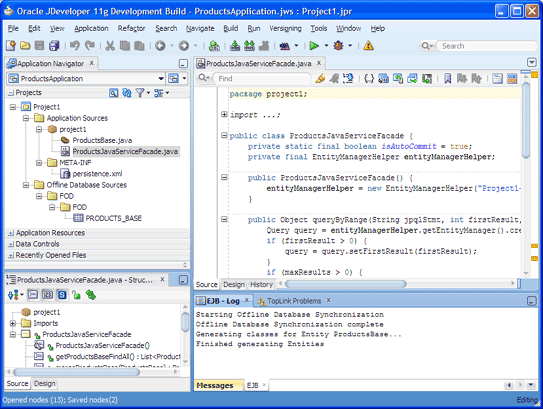
BlueJ Java IDE
First published in 1999 and free and open source in 2009, BlueJ is an IDE specially designed for educational purposes. Built for learning and teaching object-oriented programming, it’s no wonder this IDE was their first IDE for many academic computer scientists. Developed by educators at King’s College London and maintained by Oracle, this IDE is unique in its user interface.
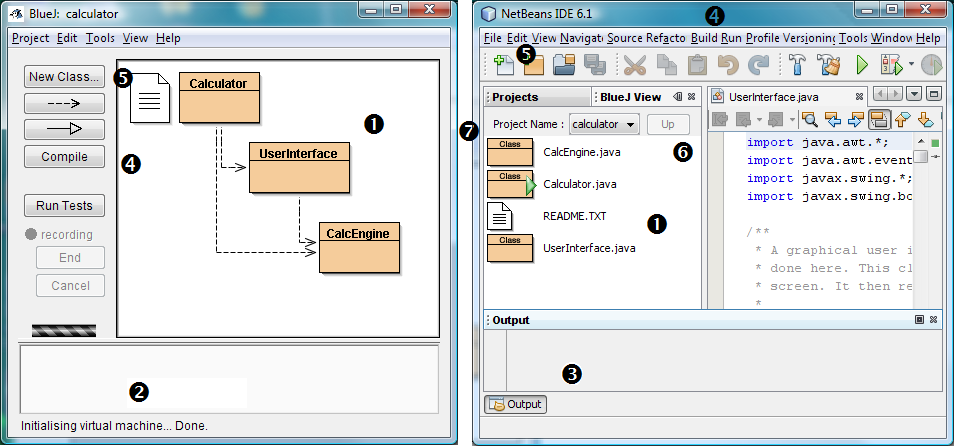
With BlueJ, object-oriented concepts (Classes, objects and method calls) are represented with an interactive visualization similar to the Unified Modeling Language. BlueJ emphasizes the class structure by graphing the code, which makes it easy to create, edit, and test objects. This IDE also provides community and educational support in the form of online and published texts. BlueJ is perfect for small-scale development for Java beginners and professionals alike, and is available on Windows, macOS, and Linux systems.
IntelliJ IDEA
IntelliJ IDEA is another of the big three Java IDEs. It can run on Windows, macOS, and Linux and is available in both a proprietary commercial edition and a licensed community edition. It comes with debugger, decompiler, test coverage, test runners, built-in version control with Git and others, Docker deployment, collaboration cloud support, and an embedded terminal.
In addition to supporting multiple languages and frameworks, IntelliJ has a proprietary AI auto-completion tool with cross-language refactoring and data flow analysis that enables developers to better understand and simplify their own code. IntelliJ also offers smart completion, chain completion, and language injection, which simplify the process for Java developers to test code as it reacts to other languages. This IDE is the ideal choice for Java developers of all levels working in multiple frameworks.

Read: IntelliJ IDEA: Overview of the Android programming IDE
DrJava
DrJava is another education-focused IDE that is developed and maintained at Rice University. It is a lightweight Java integrated development environment specially designed for beginners and students. This IDE is a simple application indeed, and not as powerful as some of the other big names, but the appeal is in DrJava’s sleek design with its clean user interface. DrJava has the additional function of evaluating Java code interactively from a console and also displaying the output on the same console.
For the more experienced programmer, this application enables automatic indenting, parenthesis matching, go to line, find / replace, commenting, syntax coloring, and autocompletion. It is available free of charge under the BSD license and for Windows, macOS and Linux systems.

JGrasp
Considered one of the best lightweight Java IDEs, JGRASP is available for Windows, MacOS and Linux. JGRASP has a workbench for Java developers, a compiler and an integrated debugger. It also creates static visualizations of the source code structure and visual representations of data structures at runtime to better analyze the coding work being done. This IDE was specially developed for novice programmers and is perfect as a demo IDE for students.
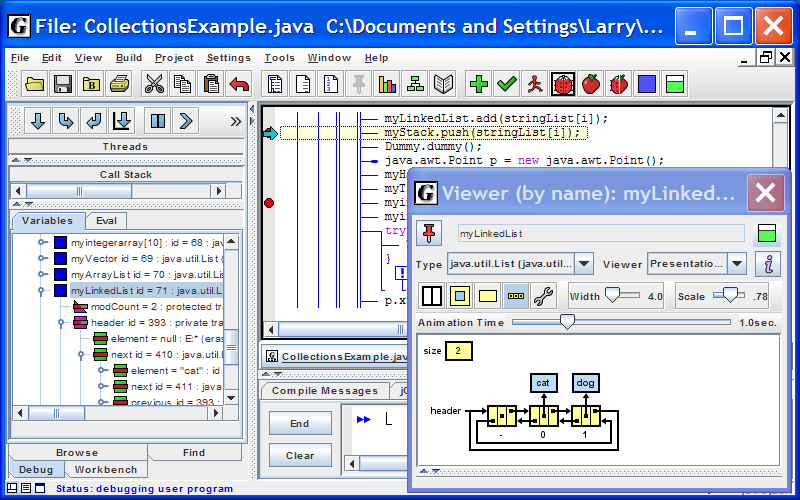
Codenvy
Red Hat has been acquired Codenvy, now CodeReady Workspaces, contributed to the Eclipse Che platform. Now, Codenvy is a commercial IDE built on top of the Eclipse cloud platform with three versions that Java developers can choose from: Developer, Enterprise, and Team.
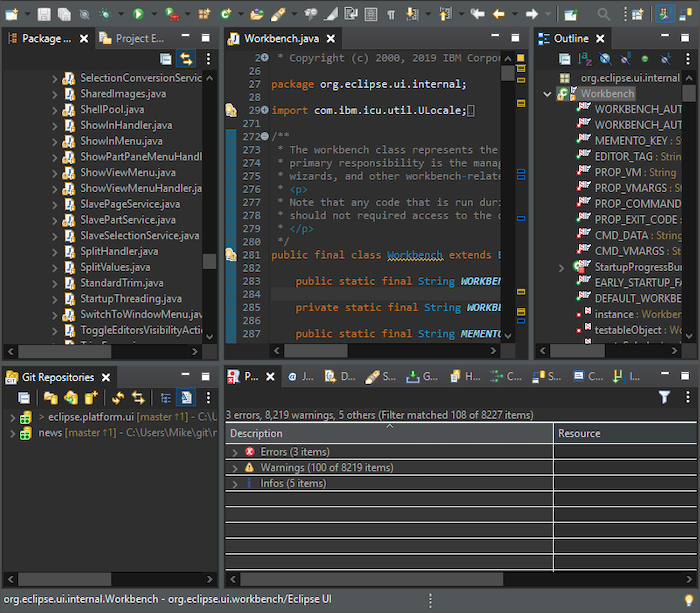
Codenvy is based on a cloud platform and is an on-demand development workstation and a Service as a software platform (SaaS). As such, Codenvy Java programmers can use not only the editor built into the browser, but also the other functions of Codenvy, such as refactoring, code completion and syntax highlighting. Codenvy’s editor makes the life of developers even easier by providing an effective interface for creating, debugging, editing, testing, and running various projects. In addition, Codenvy supports several other languages including C ++, C #, PHP, and JavaScript.
This cloud-based platform is designed for collaboration and Codenvy was designed with scale in mind. And with planned activation of remote Docker containers, this platform would be an ideal ecosystem choice for businesses of all sizes and growths.
NetBeans
Apaches NetBeans, developed by Oracle, is a free IDE and the last of the three major Java IDEs mentioned. It is available for Windows, MacOS, Linux, and Oracle’s Solaris systems. This open source application enables Java programmers to develop mobile, desktop and web applications out of the box. The functions of NetBeans are contained in modules, each of which provides specific functionality such as Java language support, editing, and support for the Concurrent Versioning System. These modules can be added with extensions from the community library. In addition, this library can be used to obtain enhancements for development support in other languages and also to add new functions. Integrated tools enable code refactoring, and the IDE itself is available in 28 different languages.
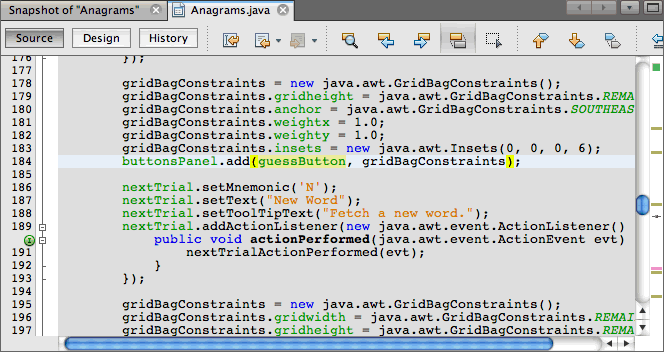
Read: NetBeans: Overview of the Android Programming IDE
Xcode IDE
First published in 2003, Xcode is Apple’s standard first-party IDE for direct development for macOS, iOS, watchOS, tvOS, and iPadOS. Xcode provides a unified workflow for user interface design, coding, testing, and debugging.
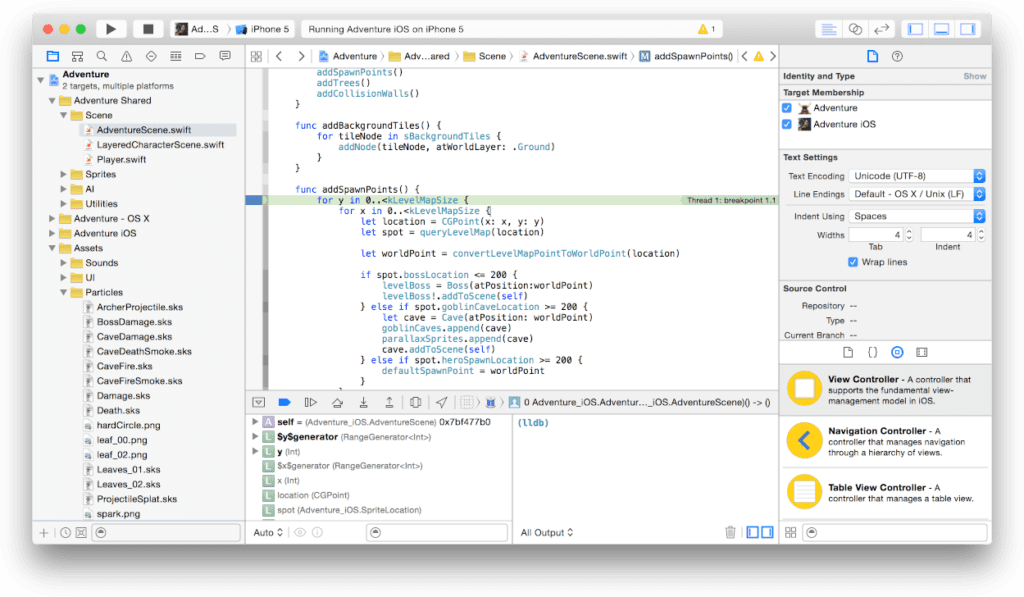
This application comes with an IDE and compilers for Swift and C / C ++ / Objective-C. It also provides tools to analyze and simulate code execution with a built-in debugger, GUI builder, and command line tools. Xcode now also includes cloud tools along with Xcode Cloud for team development as well as GitHub, BitBucket and GitLab functions for source control. However, it is only available on macOS.
Read: iOS development in Xcode
Visual Studio Code
A versatile application Visual Studio Code is a first-party application from Microsoft. With a debugger, built-in compiler, automatic syntax completion and the frequently updated technical support from Microsoft, this IDE is already a powerhouse of an app. It also enables multiple open projects such as Eclipse to be displayed in a cohesive user interface. In addition, VS Code offers a library of in-house and community-developed plugins that allow coding in more languages, automatic syntax completion and highlighting in those languages, network support, and much more. VS Code is available in Windows, macOS, and Linux systems.
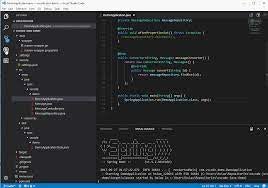
Read: Visual Studio vs. Visual Studio Code
Conclusion on the most important Java IDEs
All of the Java IDEs on this list are good options for developing in Java and other programming languages. Take them into account in your work and choose one that fits your particular style or the process of a company. There are development environments for all programming levels and for all types of scaling. Something like JGrasp would be perfect for a high school student or even a classroom getting used to learning programming and learning Java, while an IDE similar to Codenvy would be ideal for a growing business with remote teams. In my case, Visual Studio code is my currently preferred IDE for first party support and interchangeable toolset. It is important to explore every application you notice and make sure the one you are investing your resources in meets your needs, be it for Java development only or more.
